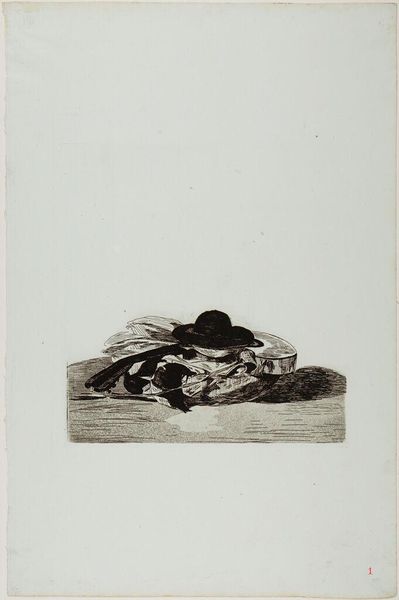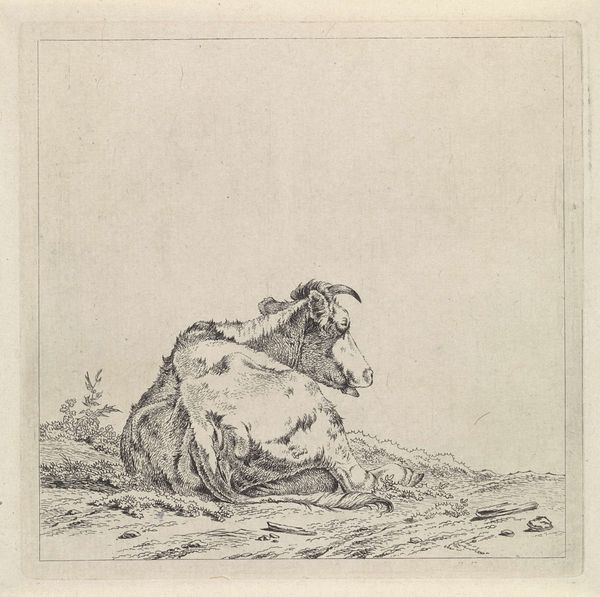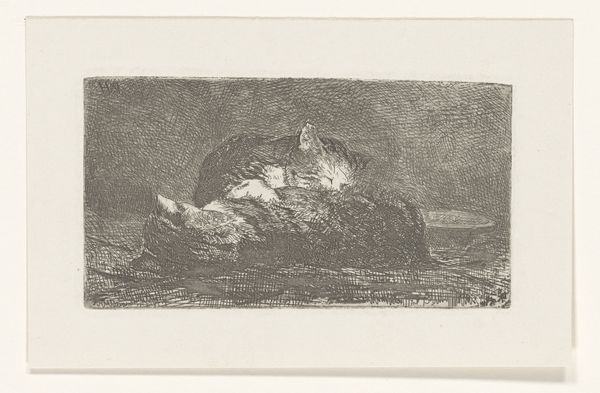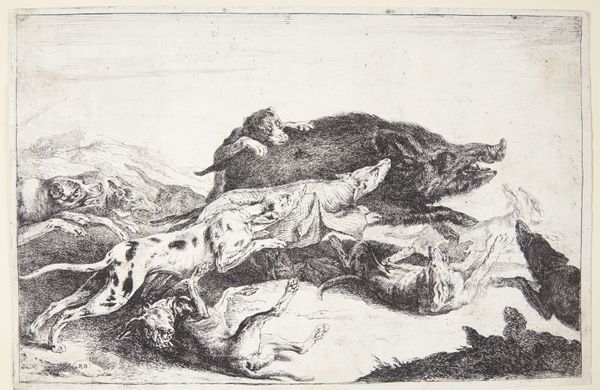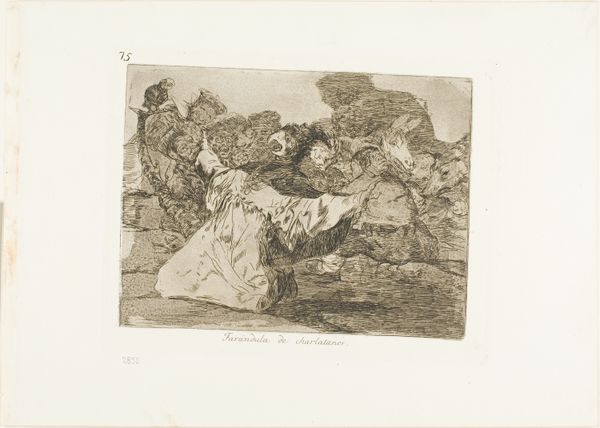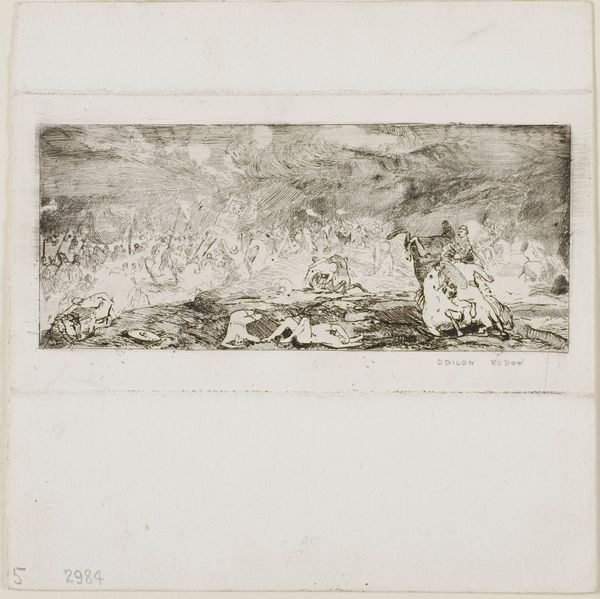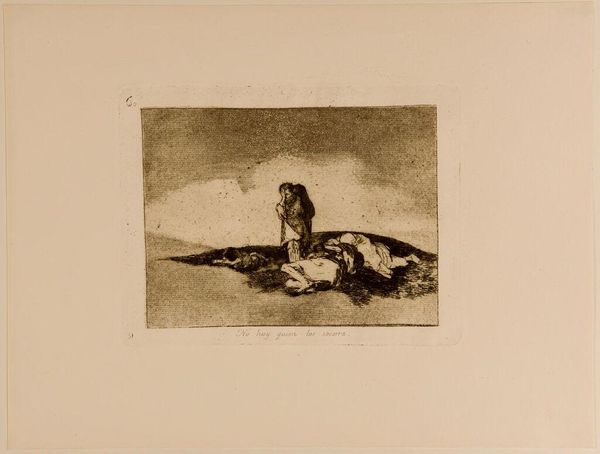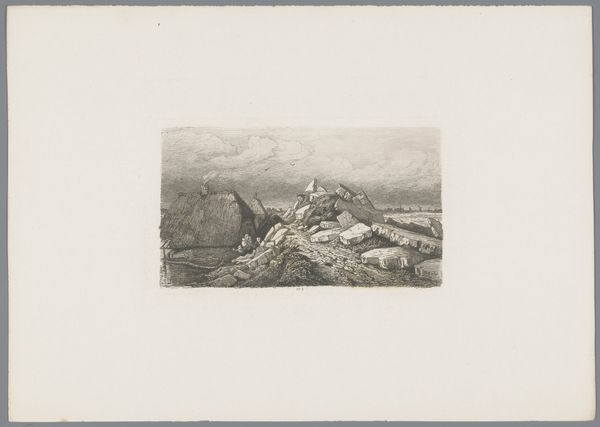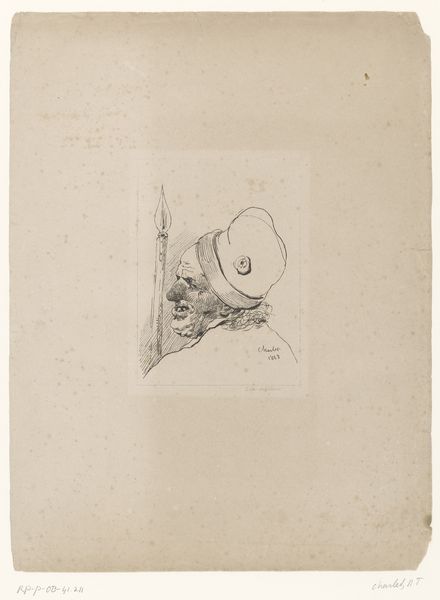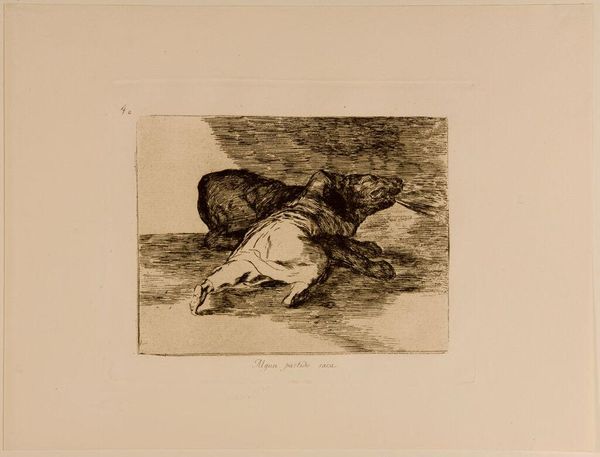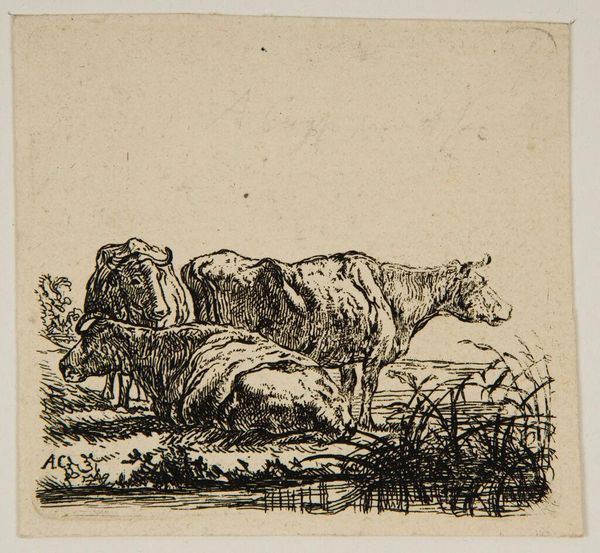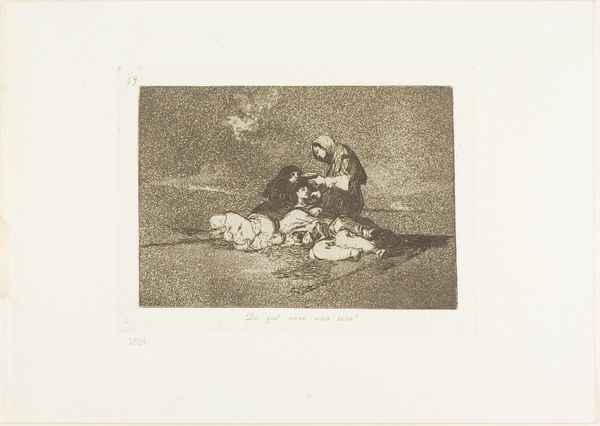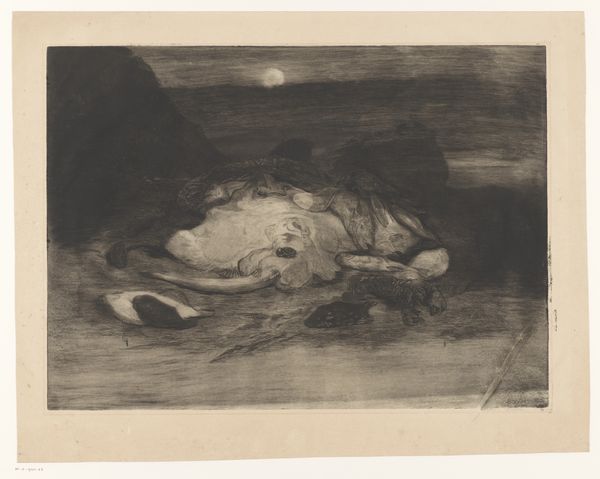
Hat and Guitar. Cover design for "Eaux-fortes par Edouard Manet," an album of fourteen etchings 1862
0:00
0:00
drawing, print, etching
#
drawing
# print
#
impressionism
#
etching
Dimensions: plate: 9 x 8 1/2in. (22.9 x 21.6cm) sheet: 16 5/8 x 11 9/16in. (42.2 x 29.4cm)
Copyright: Public Domain
Curator: Looking at "Hat and Guitar," a cover design for "Eaux-fortes par Edouard Manet," created in 1862, using the etching technique… what's your immediate impression? Editor: Immediately, I see a study in contrasts. The darkness of the hat against the paler background creates a stark division of space and depth, and a palpable, somewhat somber, mood. The textures also seem intentionally rough, juxtaposing different hatching techniques. Curator: That darkness certainly resonates. Remember Manet’s context: shifting societal values, the bohemian artist struggling against academic constraints. A hat and guitar might then represent freedom and artistic pursuit, tinged with a hint of melancholic isolation given the rather muted presentation. Editor: Precisely. The composition funnels our attention onto those two objects – almost staged on a small stage, or table perhaps. This theatrical arrangement allows for the interplay of shadow and form; the cylindrical shape upon which the objects rest anchors the grouping of otherwise disparate components. I find the compositional space, specifically the blank space above the arrangement, interesting. Curator: The negative space definitely emphasizes the arrangement's significance. Perhaps echoing the artist’s unfulfilled potential, or society's indifference toward artistic passions? Considering Manet’s admiration for Spanish art, there may even be subtle references here—a link to traditional musical imagery or social commentary found within the works of Goya? Editor: Possibly. I'm most intrigued by the lines that carve up that seemingly quiet composition; notice how the bold outlines demarcate shapes and play with varying weight. Semiotically, that thick outlining technique functions not just representationally, but almost performatively, asserting itself as a bold expressive mark. It's about calling attention to the materials, too. Curator: So, in its very form, the etching reflects the spirit of defiance against artistic norms, which can itself be translated to defiance against other forms of convention or even societal expectation… Editor: And how a rebellion need not be flamboyant; it can be expressed even through seemingly modest and conventional imagery. Thank you. Curator: A sobering point. These enduring dialogues really do open up entirely different points of reflection, don't they?
Comments
No comments
Be the first to comment and join the conversation on the ultimate creative platform.
